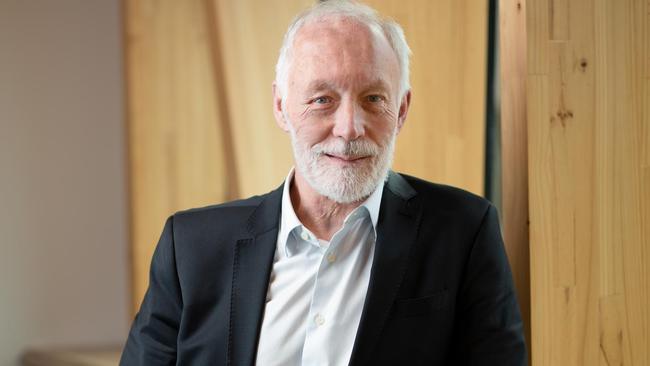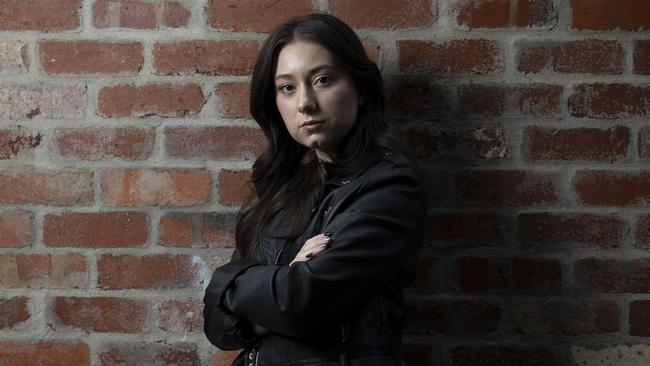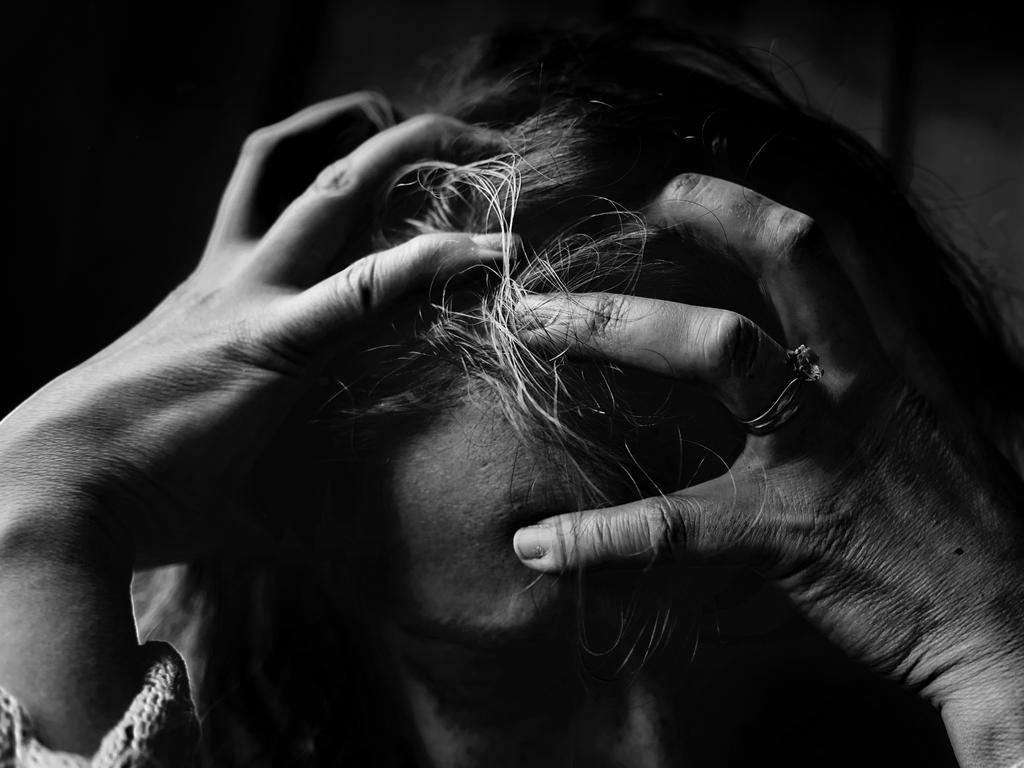‘Danger zone’ for mental health, says global study
The biggest-ever study of its kind, led by Australian psychiatrists, has found the incidence of mental ill-health in young people has risen by 50pc in 15 years.

Pressure is growing for governments to urgently formulate a nationally co-ordinated response to escalating levels of mental illness, as a major international report places the psychological health of young people in Australia among the worst in the world.
Australian psychiatrists have led the biggest worldwide study into youth mental health, finding that young people’s psychological health has entered “a dangerous phase” amid economic insecurity and political and technological changes that have left them feeling marginalised and cast adrift.
The incidence of mental ill-health in young people in Australia, especially among teenage girls, has risen by 50 per cent in the past 15 years, with a particularly alarming rise since the Covid-19 pandemic. Almost 50 per cent of women aged between 16 and 24 report experiencing a mental health disorder.
Yet the sector is drastically underfunded and neglected.
The global report in the journal Lancet Psychiatry led by prominent Australian psychiatrist Pat McGorry has heaped pressure on state governments to publicly release economic estimates of the enormous gaps in healthcare provision for those with mental illness, with hundreds of thousands of young people in acute distress unable to access psychiatrists, psychologists or community and social supports.
The report finds that the mental ill-health of young people globally is “the largest and most rapidly growing cause of disability and lost human potential and productivity across the lifespan”, and Australia is hard hit. It identifies rising intergenerational inequality, unregulated social media, wage theft, insecurity of employment, and concerns over climate change, as well as the long-tail impacts of the Covid-19 pandemic, as “megatrends” that are inflicting deep and widespread psychological distress and trauma within societies among young people.
“The highly correlated domains of distress, diagnosable episodes of mental ill-health with a need for care, and more severe, sustained, or recurrent forms of mental illness are at an all-time high,” said the paper, authored by psychiatrists and academics around the world.
“Young people are showing the most serious warning signs and symptoms of a society and a world that is in serious trouble.”

Professor McGorry warned that “the public is simmering” over the parlous and overloaded state of mental healthcare, with many families having nowhere to turn as their children spiral downwards as families are pushed from pillar to post.
“If you talk to any family and anyone that’s trying to access mental health care, they’ve had terrible difficulty,” he said. “Yet we’re not doing anything to boost the strength or capacity, or the effectiveness, of the of the youth mental health system. The kind of discrimination, in a funding sense, against the mentally ill means that only 50 per cent of people with mental illness get access to any treatment, and only 15 per cent of that treatment is of acceptable quality, so it’s terrible.”
The commonwealth and all state governments are facing calls to pour billions into an entirely new system of supports funded through the National Health Reform Agreement, the main joint funding agreement for the federation, alongside addressing key drivers of mental ill-health including insecure housing.
Mental Health Australia, alongside 80 organisations, has issued a statement of priorities ahead of a landmark health ministers meeting on Friday, which also includes mental health ministers from every state and territory as well as the commonwealth.
The mental health groups want addressed the massive gaps between acute and primary care, which are leaving millions of Australians dubbed the “missing middle”, who suffer complex mental illness but not acute psychotic episodes, unable to obtain healthcare. At the moment only the most acutely unwell can access care in public hospitals, there is a dearth of community support, and primary care and psychiatric or psychology services are suffering a crisis of access.
The groups are calling for the formulation of a national agreement “to address existing gaps over time in the funding and delivery of new and additional community-based mental health services to support equitable access to treatment, care and support”. They also want the public release of a national Analysis of Unmet Need for Psychosocial Support for at least 154,000 people with functional disability as a result of mental illness.
Mental health is critically underfunded in Australia compared to its prevalence. The Royal Australian and New Zealand College of Psychiatrists recently estimated that the nation’s psychiatry workforce meets only 56 per cent of the national demand in mental health services.
The situation is even more dire for young people. There are very few public adolescent mental health beds, along with a virtual total absence of publicly available care in the community. Headspace early intervention clinics have enormous wait lists, and private psychiatry and psychology is prohibitively expensive and inaccessible for many.
That was the case for Melbourne woman Amelia, now 23, who as a teenager suffered crippling depression and anxiety yet found it very difficult to access any specialist help. She faced a 10-month wait to see a psychologist.
“I found trying to access support has been quite a messy dirty experience to be honest,” Amelia said. “In my personal experience and that of my peers, we don’t want to stay feeling hopeless and feeling stuck, we are looking for solutions to get us through.”
Amelia agreed young people were feeling hopeless in the midst of social and economic forces that disadvantaged them.
“A lot of my peers have essentially had to dop out of uni in order to cover the costs of living,” she said. “There’s a sense of feeling stuck, and almost like there’s a little bit of hopelessness.”
Compared with the $40bn a year spent on about 600,000 Australians with a physical disability, only about $11bn a year in total is spent on more than 5 million people with a mental illness. Australia spends less than 7 per cent of its health budget on mental health, but the suite of conditions is responsible for 15 to 20 per cent of the health burden to society.
“If this was happening in any other health domain, there would be very dramatic action taken to respond to this public health crisis,” said Professor McGorry.
The Lancet report finds there is “worldwide neglect of mental illness due to stigma and discrimination within health care and medical research” and warns that “cohesion and prosperity of societies around the world are at risk, and not limited to health outcomes alone”. Australia is second only to the US in rising mental ill-health trends, and suicide is the leading cause of death among Australians aged 15 to 44.
“We’ve assembled all the evidence and worked out: is this a real phenomenon, or is it more is it just more awareness?” Professor McGorry said. “But it’s very clearly real and solid. When you see a rise of that extent, over quite a short period, we’ve got to understand what’s changed in society to actually to bring this about.
“The conclusion is that society is in trouble in terms of its ability to safeguard the mental health of young people as they make the transition from childhood to adulthood. So this has to be social and economic forces that are doing this. We want to see this is become a number one health priority. Mental health has always been the poor cousin. This crisis is not going to be reversed overnight, and it’s going to take a political consensus to do so, but while we’re dealing with this rising tide, we’ve got to actually help the casualties, which are two out of five young people.”







To join the conversation, please log in. Don't have an account? Register
Join the conversation, you are commenting as Logout